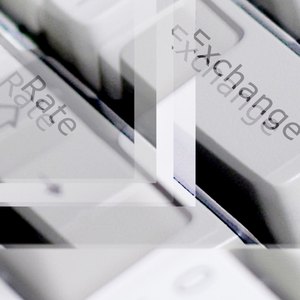
The "bid and ask" or "bid and offer" is a two-way price quote for a share of stock. It's the best offer a seller receives per share at a certain time. A trade, or the exchange of cash for a share, takes place when the "bid" equals the "ask."
In turn, "spread" is the difference between the "ask" price (the minimum price a seller will accept for security) and the "bid" price (the maximum amount a buyer will pay for a share of stock). In contrast, the "percentage" refers to the difference between the stock's two most recent trading prices.
What's the Function of the Bid Price?
A bid price will rise if the number of buyers who demonstrate an interest in buying shares of a certain stock is greater than the number of sellers who offer their shares for sale. As buyers increase their bid price, sellers tend to increase their ask price. The opposite is also true: As buyers decrease their bid price, sellers decrease their ask price.
What's more, when buyers outnumber sellers, a security's price will trend upwards. When sellers outnumber buyers, a security's price will trend downward.
Read More: How to Calculate a Bid-Ask Spread
The Bid-Ask Spread Calculation
As stated previously, spread (as it relates to a price pair) is the difference between an ask price – the minimum price a seller will accept for a security – and the bid price – the maximum amount a buyer will pay for a share of stock. So, the ask price minus the bid price equals the bid-ask spread.
What Is the Importance of Bid-Ask Spread?
In bid-ask price pairs, if the ask price is higher than the bid price, the spread is the difference between the two prices. The spread is an indication of the friction that exists between market participants and, consequently, a measure of market efficiency; the smaller the spread, the more efficient the market.
What's more, the wider the bid-ask spreads, the lower the trading profits. The use of limit orders can mitigate the effect of bid-ask spreads.
How Market Makers Mitigate the Effects of Bid-Ask Spreads
During steep market declines, spreads widen because a supply-demand imbalance exists. If the bid-ask spread is significant, it may be a sign that market makers are "making a market" for illiquid shares, rather than continue to hold low-volume securities and accept the risk of doing so. When market makers make a market, they provide liquidity, which improves the market's function. The wider the spread, the higher the market maker's premium.
Read More: How to Calculate Spread
How to Calculate the Bid-Ask Spread Percentage
To calculate the bid-ask spread percentage, first determine the bid-ask spread, then divide the bid-ask spread by the ask price.
For example, consider a stock trading at $12/$15. This bid price is $12 and the ask price is $15. In this case, the bid-ask spread is $3. The bid-ask spread as a percentage equals $3/$15 or 20 percent.
Possible Responses to Significant Bid-Ask Spreads
Employ limit orders. If the market is in turmoil, use limit orders – a means to set a limit on the purchase or sale price of a security – and not market orders, which are a means to fill an order at a prevailing market price. They also prevent the possibility that your use of market orders will use up market liquidity and, as a result, be charged by the electronic communication networks for using up market liquidity.
Monitor bid-ask spreads. By monitoring the bid-ask spread percentages, you may avoid incurring excessive risk and higher costs. Equally important, search out narrow spreads.
References
Tips
- The traditional forex pip is at 4 decimal places. Many brokers now quote rates to five places, resulting in fractional pip spreads.
- The stock spread example can be expanded to calculate the spread for any direct cost investment. Use the forex example as a guide for calculating spread percentage for investments with a high degree of leverage.
- Stock spreads will be as low as 1 cent for actively traded stocks. Thinly traded stocks can see spreads of 10 cents or more.
Writer Bio
Billie Nordmeyer is an IT consultant of 25 years standing. As a senior technical consultant for SAP America and Deloitte Touche DRT Systems, a business analyst, senior staff, and independent consultant, Billie has worked across the retail, oil and gas, pharmaceutical, aeronautics and banking industries. Billie holds a BSBA accounting, MBA finance, MA international management as well as the Business Analyst and Software Project Management certificates from the Cockrell School of Engineering at the University of Texas at Austin.

